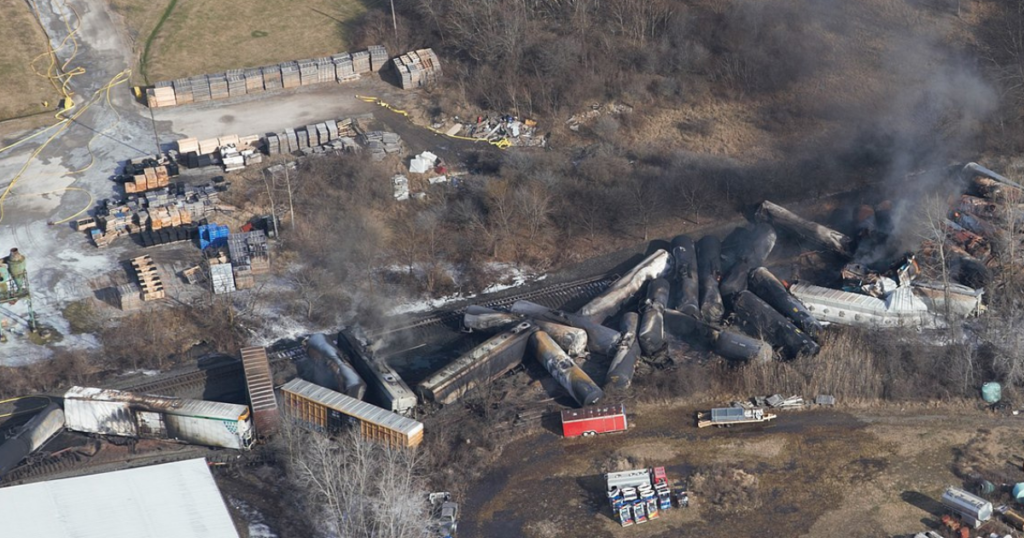 Debris from a Norfolk Southern freight train lies scattered and burning along the tracks on Feb. 4, 2023, the day after it derailed in East Palestine, Ohio.
Debris from a Norfolk Southern freight train lies scattered and burning along the tracks on Feb. 4, 2023, the day after it derailed in East Palestine, Ohio.
Facilities that extract oil and refine it into plastics have historically operated near communities of color and low-income communities, such as the Chemical Valley around Charleston, West Virginia, or Louisiana’s Cancer Alley. These communities face high rates of diseases due to years of being exposed to highly toxic chemicals like benzene in their air.
Communities that are close to rail lines are also at risk. Residents living in East Palestine, Ohio still suffer from rashes and breathing problems after a train carrying vinyl chloride, the well-known plastic used in construction, derailed and triggered a massive chemical fire.